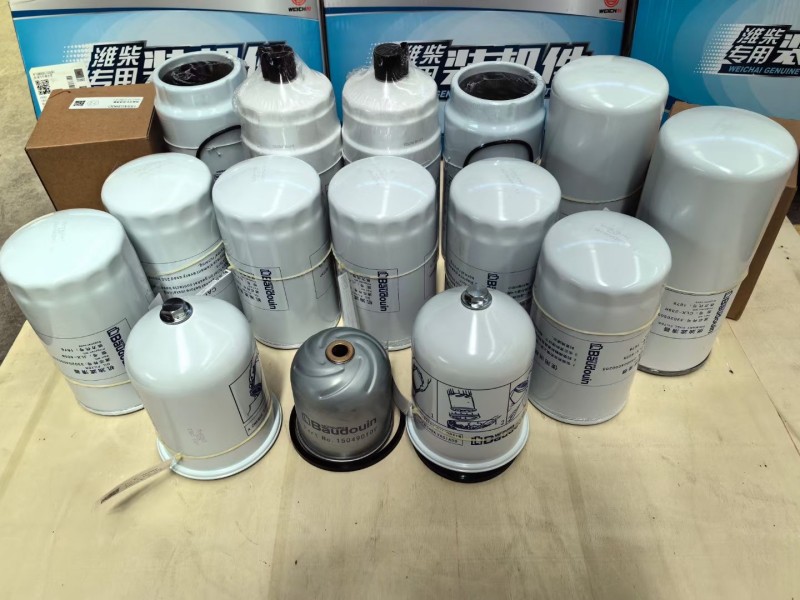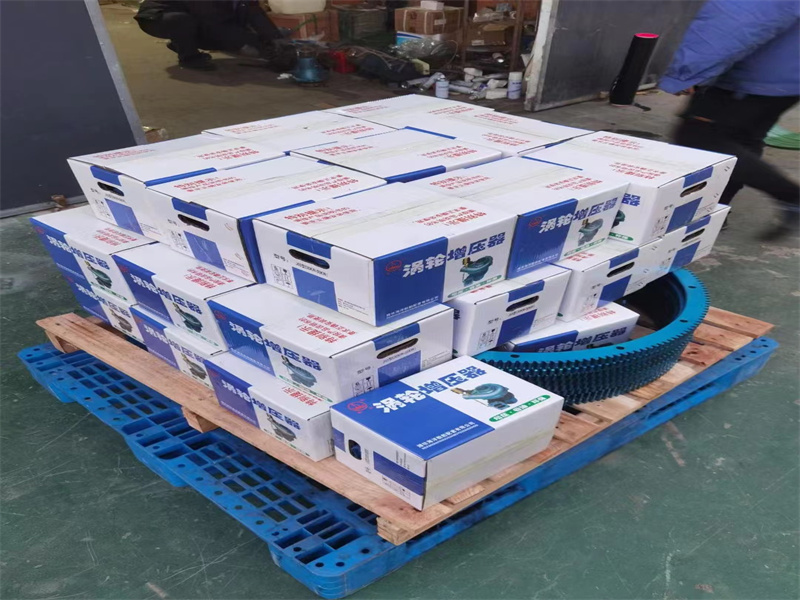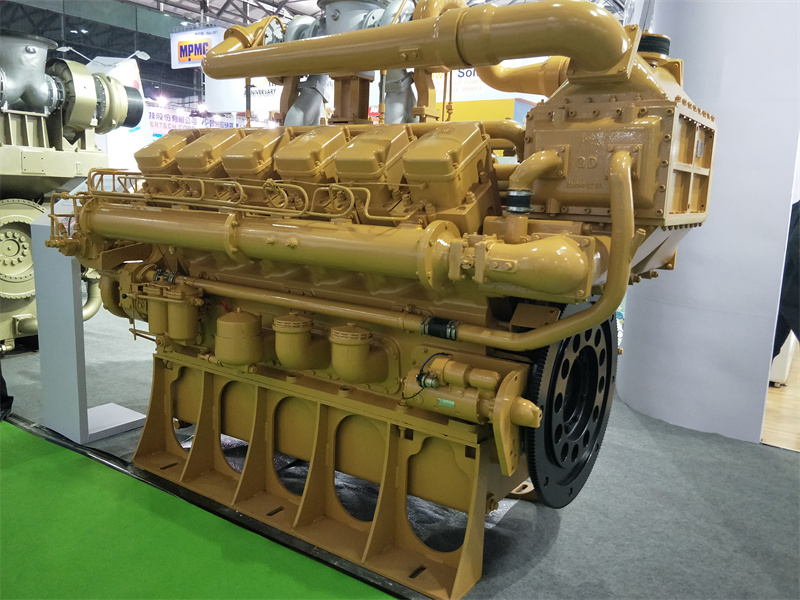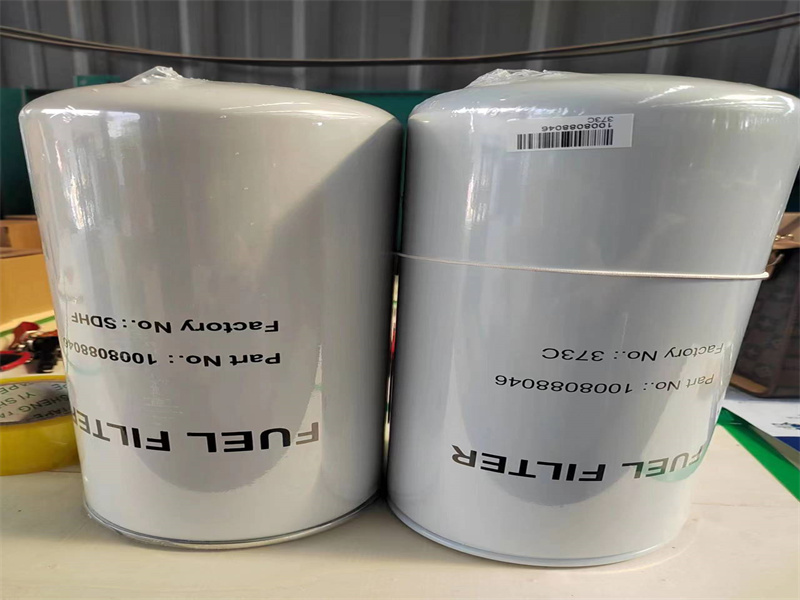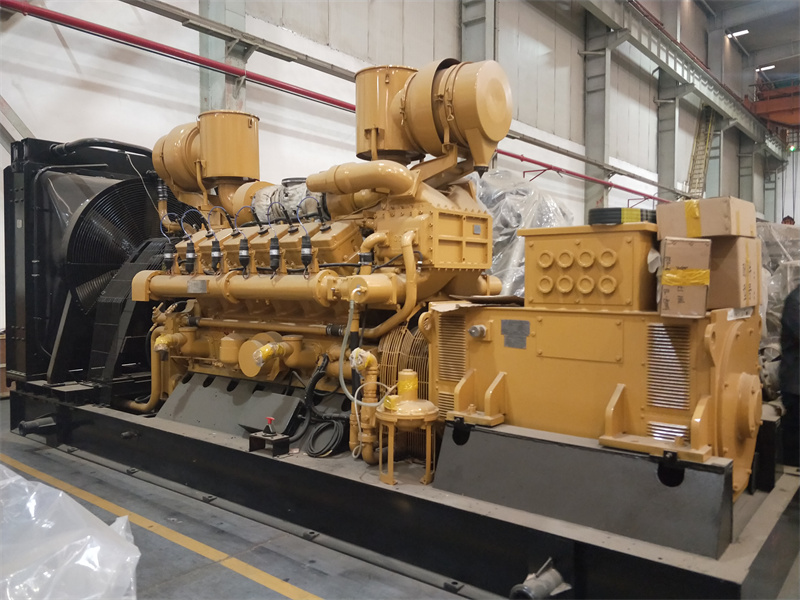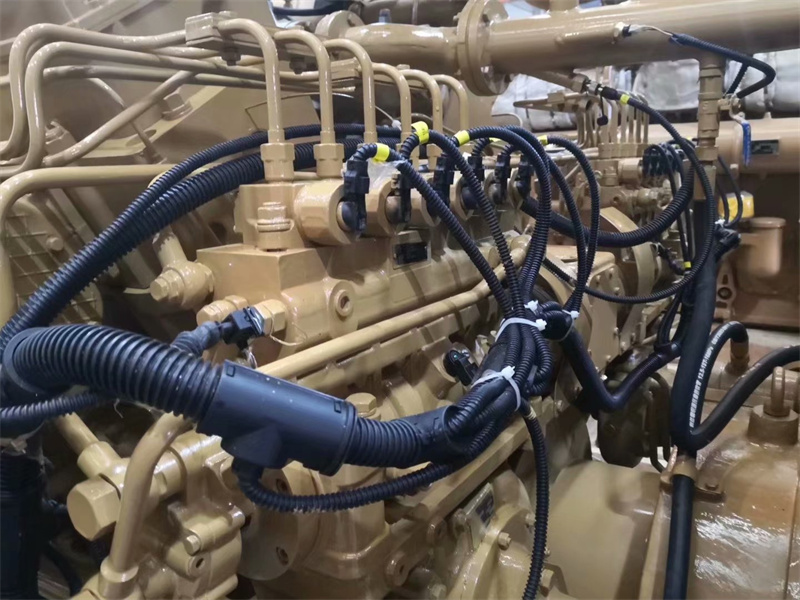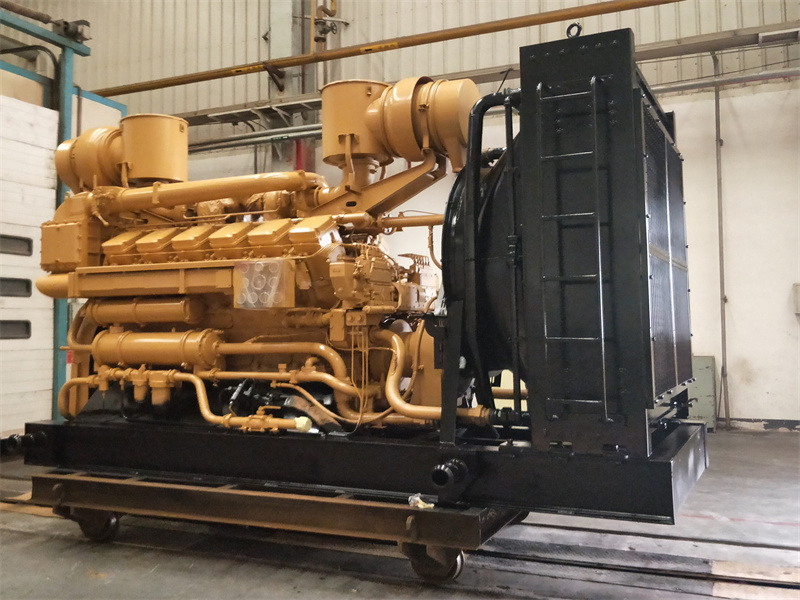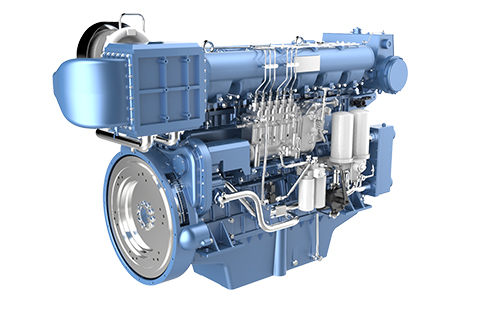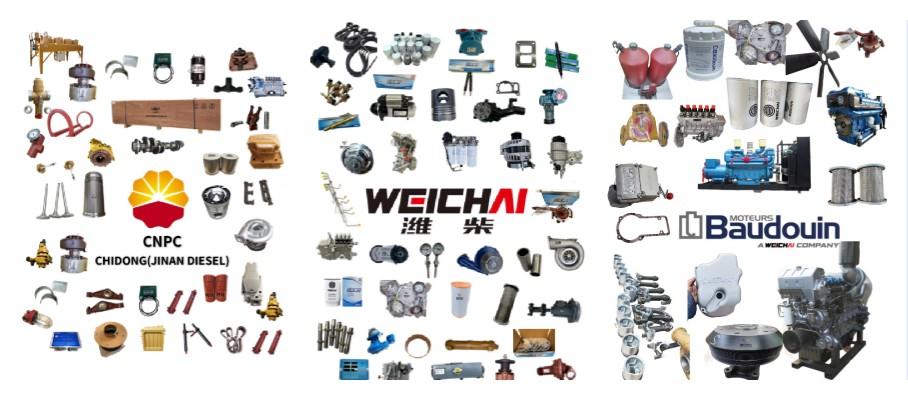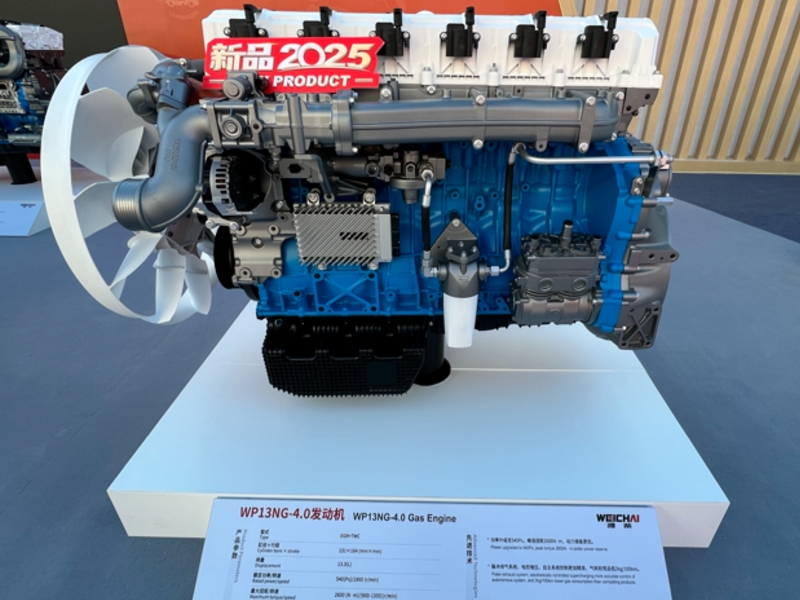Welcome to Shandong Hongfan Power Technology Co.,Ltd
how to repair cylinder wear take the example of jinan diesel engine G12V190PZL as example
Example 1 Abnormal wear of cylinder
Cylinder wear is caused by the relative movement of the piston and piston rings against the cylinder wall. When the cylinder wear is severe, the compression pressure of the cylinder drops, causing difficulty in starting the engine, reduced power, increased fuel consumption, etc.
1. Cause of failure
1) The lubricating oil contains dust, carbon deposits and metal particles, which splash onto the surface of the cylinder along with the oil, or the air filter is ineffective, causing air containing impurities to be sucked into the cylinder, all of which accelerate the wear of the cylinder.
2) The engine temperature is too high, causing the lubricating oil to become thinner and making it difficult to form an oil film; the engine running at low temperature for a long time increases the viscosity of the oil and makes it difficult to enter between the piston and the cylinder wall, which will cause excessive wear of the cylinder.
3) Bending or bending of the connecting rod, bending of the crankshaft, eccentric wear of the piston, excessive elasticity of the piston ring, etc. will cause the movement of the piston in the cylinder to deform and increase the unit pressure, causing excessive wear of the cylinder wall.
4) Gasoline or coolant leaks into the crankcase, diluting the lubricating oil, reducing the lubrication effect and causing the cylinder to wear too quickly.
5) Improper boring and grinding of the cylinder or deformation of the cylinder block, or excessive axial movement of the crankshaft, causing the cylinder center line and the crankshaft axis to be non-perpendicular, or the piston movement deviating from the cylinder center, causing abnormal cylinder wear.
6) When boring and scraping the big-end bearing (tile) of the connecting rod and reaming the small-end bushing, the center lines of the two holes are not parallel, resulting in improper assembly of the piston and abnormal wear of the cylinder.
2. Failure prevention and maintenance
1) Drivers must strictly abide by the relevant regulations on vehicle use, perform daily maintenance work, and reduce abnormal cylinder wear. In addition, it is necessary to improve the quality of maintenance and strictly inspect relevant mechanical parts to prevent unqualified parts from being installed into the assembly.
2) When the roundness and cylindricity errors of the cylinder exceed the specified standards, the cylinder should be repaired by boring.
Example 2 Cylinder strain
Since the working surface of the cylinder is often in contact with high-temperature and high-pressure gas, and the piston, piston ring, and piston pin make high-speed reciprocating motions therein, cylinder strain is undoubtedly related to these parts. These parts roughen or groove the cylinder wall (or piston surface).
After the cylinder is strained, the lubricating oil will escape into the combustion chamber, causing excessive carbon deposits, and will also cause the combustible mixture to escape into the oil pan and dilute the lubricating oil. When the cylinder is severely strained, a large amount of blue-white smoke will be discharged from the exhaust pipe, and a "gasping" phenomenon will be seen at the lubricating oil port, and oil smoke will escape. At the same time, it is obvious that the engine power is insufficient or there is a knocking sound from the piston.
1. Cause of failure
1) When the engine is running, the clearance between the piston and the cylinder wall becomes abnormal. For example, if the engine is overheated, the gap between the piston and the cylinder is improperly selected when boring the cylinder, the piston material and aging are improperly processed, the taper of the piston or the roundness of the skirt is out of tolerance, etc., it will cause dry friction between the piston and the cylinder and strain the cylinder.
2) The piston ring breaks, the piston pin snap ring falls off, the piston pin pops out, the connecting rod bends or twists, causing the piston and ring to tilt, straining the cylinder.
3) There is insufficient lubricating oil in the oil pan. Or the side clearance, back rub and open end clearance of the piston ring and the ring groove are improperly selected.
4) The air, fuel, and lubricating oil are not filtered well, forming abrasives with the cylinder; or the diesel engine's injector leaks severely and dilutes the lubricating oil, destroying normal lubrication. 2. Trouble prevention and maintenance
1) Drivers should develop the habit of checking whether the lubricating oil and cooling are sufficient before starting the vehicle. In winter, prevent the coolant channel from being blocked by ice, causing the radiator to appear "full of coolant". Once the ice melts and the coolant channel is unblocked, it will cause a lack of coolant and drive.
2) The open end of the piston pin snap ring should face the lower part of the piston. Since the piston changes direction faster in the upper half of the stroke than in the second half, the downward opening allows the snap ring to have a full load-bearing surface at the upper part, which is the point of maximum motion stress. When installing a single-fork snap ring, be sure to point the fork tips outward and the opening toward the lower part of the piston to prevent the single fork from being worn off by the end of the piston pin and straining the cylinder.
3) During engine maintenance, inspection and repair of relevant parts should be strengthened to ensure the quality of the installed pistons, connecting rods, crankshafts and other parts. Eliminate cylinder pulls caused by improper technical specifications during maintenance.
4) Comply with the regulations on the vehicle running-in period and daily maintenance work in the "Technical Management Regulations on Vehicles in the Automobile Transportation Industry".
Example 3 Oiling the cylinder
Cylinder oiling means that lubricating oil flows into the combustion chamber, causing carbon deposits in the combustion chamber and poor engine operation.
1. Cause of failure
1) The outer surface of the piston ring is rough, the light leakage of the ring is serious, and the cross-sectional shape of the ring is different from the original ring.
2) During maintenance, the openings where the piston rings are installed on the piston are misaligned with each other, causing air leakage. Or when the engine is running, the gas ring floats in the ring groove, causing the opening angle of the ring to change, causing the sealing of the ring to decrease and lubricating oil to escape into the combustion chamber.
3) The piston ring and ring groove, and the piston and cylinder wall are worn excessively; or during maintenance, each ring is not installed into its respective ring groove as required; in addition, the side clearance, back clearance, and open end clearance of the gas ring are not controlled. strict.
4) The air ring sticks in the ring groove and loses its own elasticity, or the oil ring has poor oil scraping ability.
5) New or overhauled engines are not running in or are not running in well.
